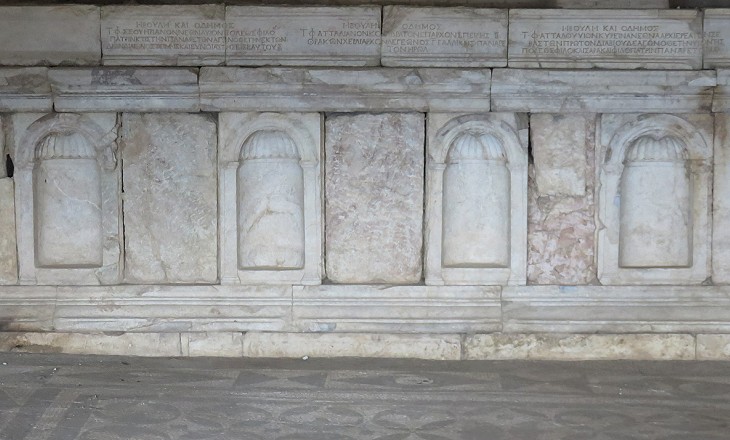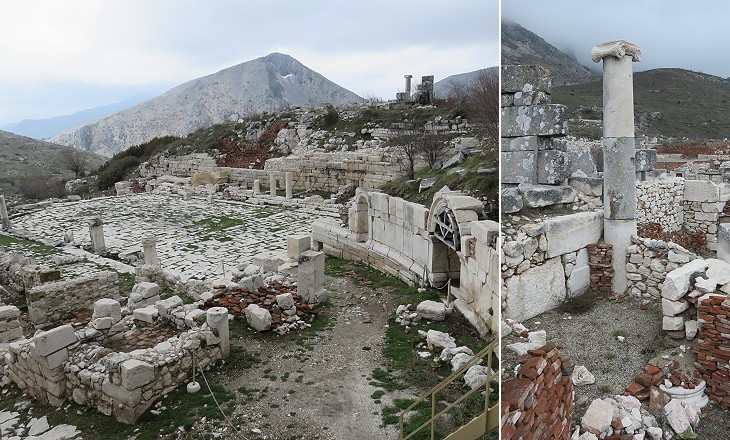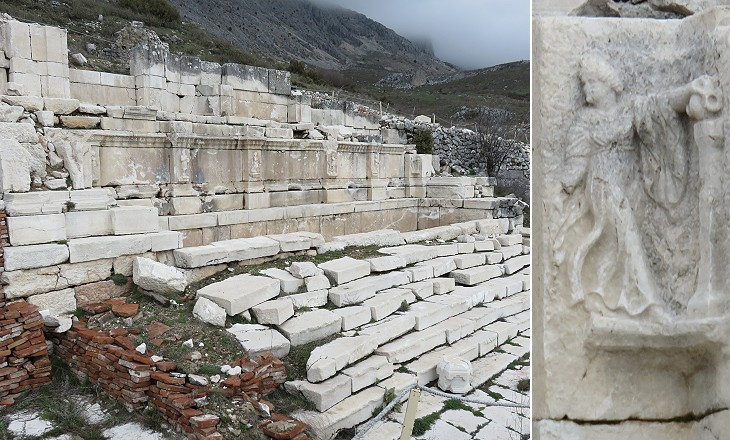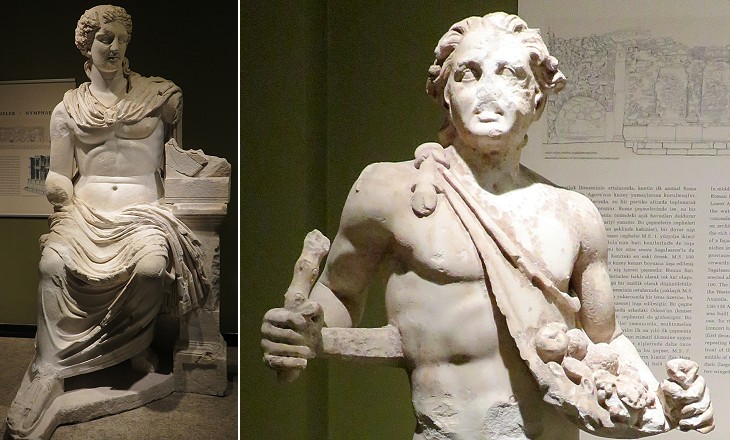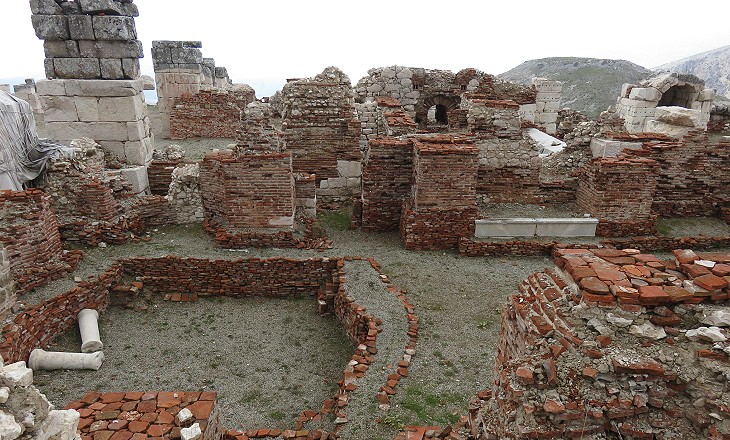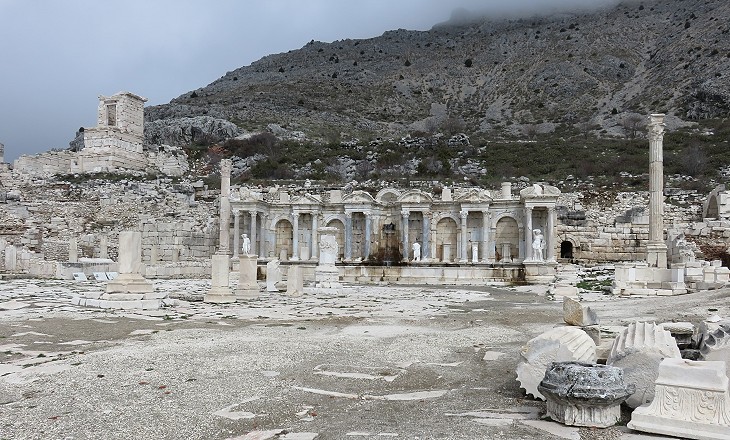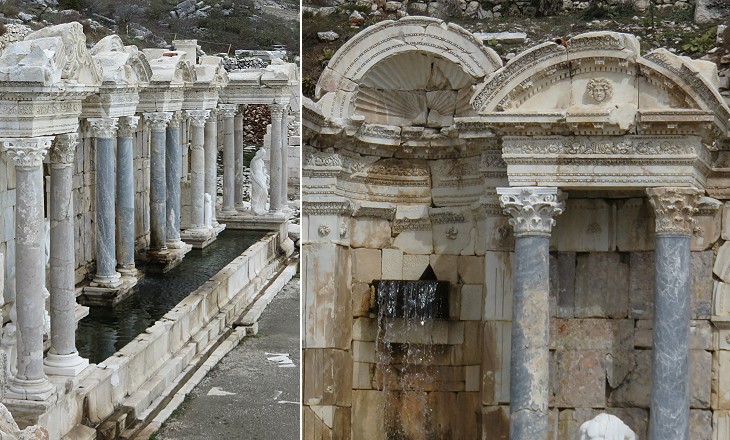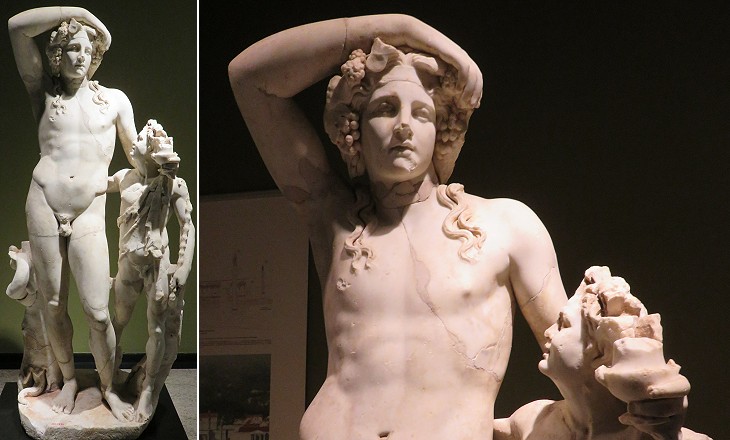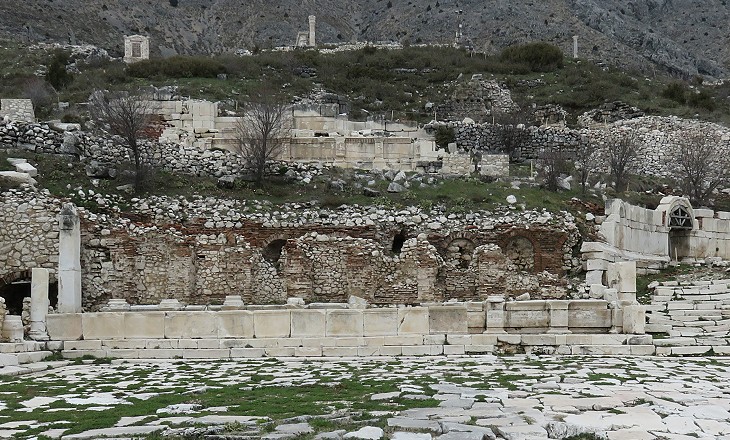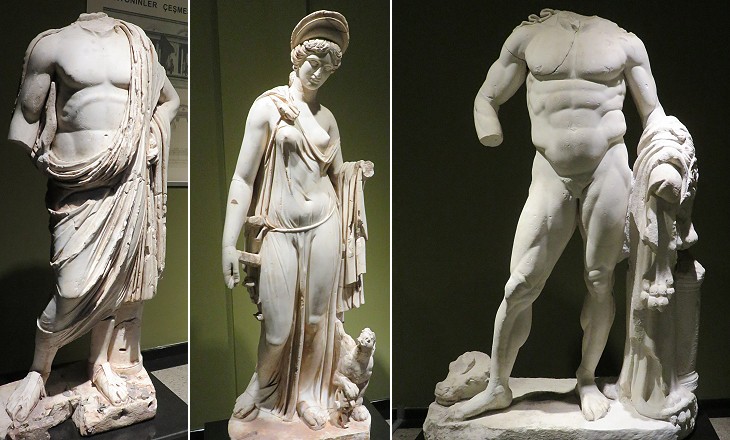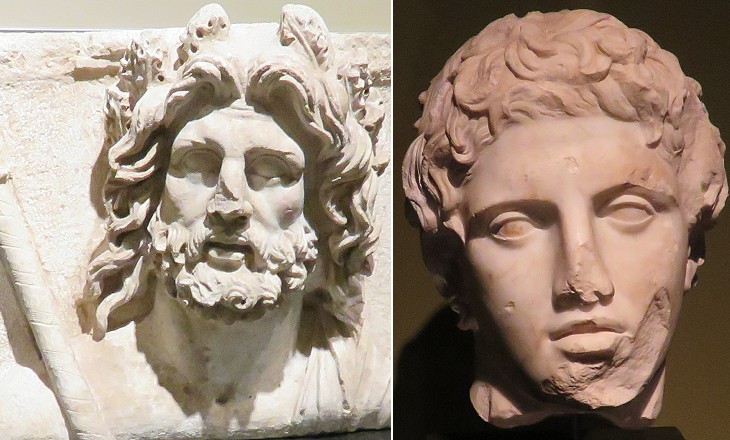  What's New! Detailed Sitemap All images © by Roberto Piperno, owner of the domain. Write to romapip@quipo.it. Text edited by Rosamie Moore. Page added in May 2015. |
  - Sagalassos - page two: "Golden Age" Monuments - Sagalassos - page two: "Golden Age" Monuments(Heroon at Sagalassos) You may wish to read an introduction to this section or page one first. This has been an historic summit meeting. It brings us to the threshold of a new world, a world of hope and opportunity. (..) We've indeed formed a truly new relationship, one of peace, friendship, trust, and growing partnership. I am confident that this new relationship and our historic agreements at this summit will lead to a safer, more stable, and peaceful world. George Bush, President of the United States at a press conference after a meeting with President Boris Yeltsin of Russia on June 17, 1992 in Washington. During the press conference President Bush was asked about the use of the "peace dividend" and his answer was: I'm determined to help the cities. We've got some good proposals up there and for the Congress, and I believe they're working on them, and I hope that they'll pass them. A similar speech could have been delivered by Emperor Hadrian in 117 AD, after he signed a peace treaty with the Parthians which lasted for more than forty years. Tellus Stabilita (global stability) is the title of the chapter covering Hadrian's policy of consolidating the existing borders of the Empire in Memoirs of Hadrian by Marguerite Yourcenar.
Hadrian promoted the construction of new roads, aqueducts, fortifications, granaries, libraries and many other facilities throughout the Empire. In Sagalassos, similar to what occurred in many other towns, local wealthy individuals felt they had to contribute to the well-being of their community. Members of the Neon family acquired Roman citizenship at the time of Emperor Vespasian and in ca 120 AD they decided to build a public library near the Hellenistic Fountain (described in page one). The hall was decorated with seven niches above which inscriptions provided information on members of the family and the public offices they held.
In the main provincial towns a flamen was appointed to preside over the ceremonies related to the "imperial cult" which were meant to strengthen the allegiance to Rome. Prior to the construction of a large Temple to Hadrian and Antoninus Pius (described in page one), these ceremonies took place at a temple built during the reign of Emperor Augustus and having a commanding view over the Lower Agora. It was dedicated to Apollo because Augustus had a special devotion for that god, to the point that he built a temple to Apollo in his House on the Palatine Hill in Rome.
Singapore is the best city in the world for budget travellers looking for wifi available in accommodation, according to a study by Hostelbookers. From TNOOZ website. Back in the IInd century AD rankings of cities would have been based on the availability of water. Monumental fountains were a symbol of the wealth of a town and the team of archaeologists at Sagalassos has found evidence of three of them built in the course of a century. The oldest one was built in 129-32 and it was dedicated to Emperor Hadrian.
The fountain was built by Tiberius Claudius Piso, the first Roman eques (knight) of Sagalassos, and, consistent with the dedication to Apollo of the nearby temple, it housed a gigantic statue of the god playing a cithara (lyre). The fountain most likely collapsed in 513 because of a major earthquake. The statues found at the nymphaeum are of high quality and according to archaeologists they were made in three different workshops.
Excavations in the eastern side of the Lower Agora unearthed a very large bath complex which included a smaller older structure of the early Ist century AD. The construction of the new baths began in ca 120 and ended in ca 165. It was a luxury establishment; its halls were made of thick walls of concrete and bricks and were decorated with marbles. The exterior was faced with large stones.
In 2007 archaeologists were rewarded for their hard work by the discovery of the head of a gigantic statue. They did not need to search for inscriptions to determine the person portrayed: it was Emperor Hadrian. Other fragments of this statue and other statues of members of the imperial family came to light during that excavation campaign and that of the following year. They were not found in the large hall where they were initially placed, but in a dressing room, where they were moved during a redesign of the baths which occurred in ca 400. The decision of relocating the statues to a less prestigious room was an effect of the compulsory move to Christianity decreed by Emperor Theodosius in 392. Eventually all emperors before Constantine were regarded as persecutors of the martyrs and their statues were torn down and smashed, but at Sardis, a colossal statue of Emperor Tiberius, whom the inhabitants regarded as the founder of their city after a major earthquake, appears to have stood at its place until the VIIth century.
“We hope to make the ancient city a centre for tourists.” said Professor Celal Simsek, who has headed the project since 2003. The team’s ultimate aim is to finish the all the excavation by 2015 and make the ancient city another Ephesus. “We believe it will attract 2 million visitors a year.” Hurriyet Daily News - December 7, 2011 with reference to the archaeological activity at Laodicea, an ancient town near Hierapolis. Here (at Laodicea), a long abandoned Greek-Roman city is being resurrected wholesale from its ruins by … construction cranes and teams of workmen in hard-hats! Terry Richardson - Today's Zaman - December 4, 2012. Sagalassos is already "marketed" as the "New Ephesus". The reconstruction of the grand Antonine Nymphaeum may provide it with that unique monument (similar to the Library of Celsus at Ephesus) capable of attracting a very large number of visitors. I wish to advise the management of Sagalassos to bring colonies of cats to the archaeological site, because, during a very recent visit made to Ephesus, I noticed that cats were frequently photographed, whereas the monuments were only incidental backgrounds for "selfies".
The two Antonines governed the Roman world forty-two years with the same invariable spirit of wisdom and virtue. (..) Their united reigns are possibly the only period of history in which the happiness of a great people was the sole object of government. Edward Gibbon - The History of the Decline and Fall of the Roman Empire - 1788 Gibbon made reference to the reigns of Antoninus Pius and Marcus Aurelius, his son-in-law. The Age of the Antonines is a term used by historians which very often includes the reigns of Nerva, Trajan and Hadrian and that of Commodus, Marcus Aurelius' son. A typical aspect of the monuments built during the Age of the Antonines is the use of coloured marbles. The reconstructed nymphaeum is a beautiful example of the care and taste by which the marbles were chosen.
The second of his names we will hear about today is Lysios, the 'loosener', 'liberator', 'releaser', the untier of knots and bonds. This name is cognate with the practice which we perform, psycho-ana-lysis. Lysis, lysios. (..) The most famous land of Nysa, where it is said he was brought shortly after his birth, to protect him from the persecutory wrath of Hera, is in Asia, in ancient Lydia or Phrygia, western or Anatolian Turkey. It is there that he is raised by an all-female society of nursing nymphs who become his mothers, lovers, devotees and attendants, the Maenads, the mad women followers of Dionysos. Gary D. Astrachan in Other/Wise - Journal of the International Forum for Psychoanalytic Education - 2014 Francis Vyvyan Jago Arundell, chaplain of the English community of Smyrna, who visited Sagalassos in November 1833, did not see this statue. Had he seen it he would have regarded it as a clear indication of Roman debauchery, because it was so different from the canons of Classical Greek art. He would have found its nudity to be obscene especially considering that it was placed in the main square of the ancient town. Yet the drunken way Dionysus stares at you is very intriguing.
Gibbon was not the first one to highlight the positive image of the Antonines. Emperor Septimius Severus, who had no family bonds with them, claimed in many celebratory inscriptions to descend from them (you may wish to see an inscription which eventually ended up in the Great Mosque of Kairouan). His elder son was named Marcus Aurelius Antoninus, but he was so disliked that he passed to history as Caracalla, after a short Gaul tunic he used to wear. Septimius Severus and Caracalla continued the "building policy" of the Antonines (e.g. monuments of Leptis Magna and Caracalla's Baths in Rome).
The Archaeological Museum of Burdur, the capital of the vilayet (province) where Sagalassos is situated, has undergone a renovation of its interior in order to properly house the many statues and reliefs found at Sagalassos. In January 2015 I happened to be the first visitor of the day and the door was unlocked for me. I first thought that they had forgotten to turn on the lights, but I soon discovered that beams of light were activated by my approaching the exhibits. It is a spectacular way to enhance the impact of statues and reliefs. There are however some cons because the picky visitor who wants to walk around a statue to see its back, comes out from the area which activates the light-beams. This approach has already been implemented at other Turkish archaeological museums (e.g. Ephesus, Antalya and Smyrna) and is in the process of being implemented at Istanbul, Isparta, Iznik and other locations.
The image used as background for this page shows a relief portraying a bust on the keystone of a niche in the Lower Agora. Return to page one. Introductory page Isparta Egirdir Afyonkarahisar Kutahya Map of Turkey with all the locations covered in this website  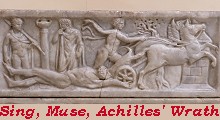 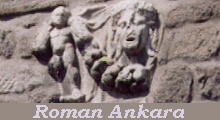 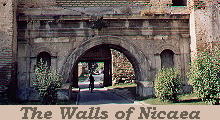 |
